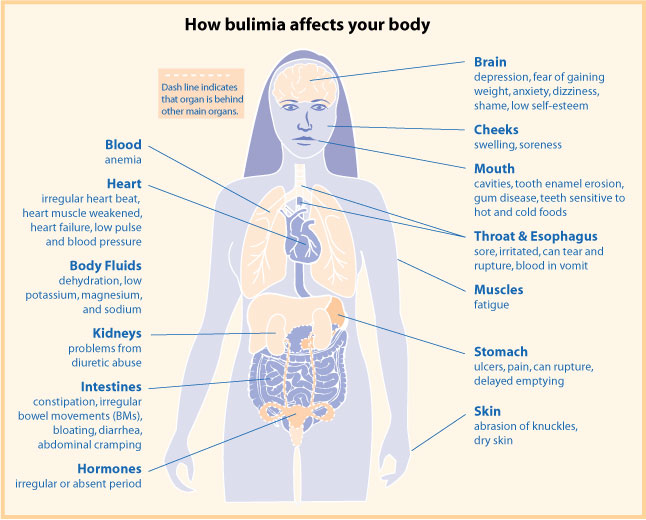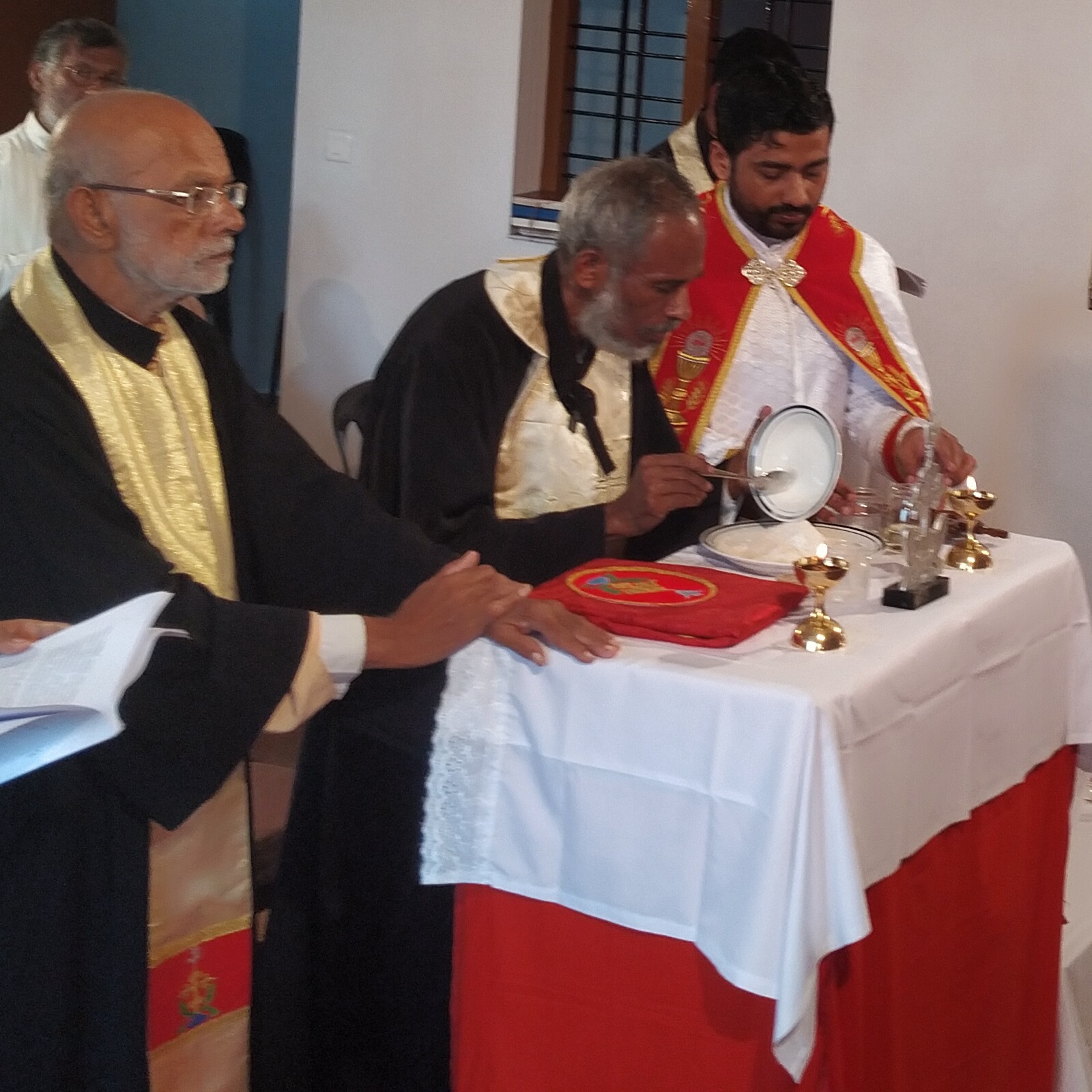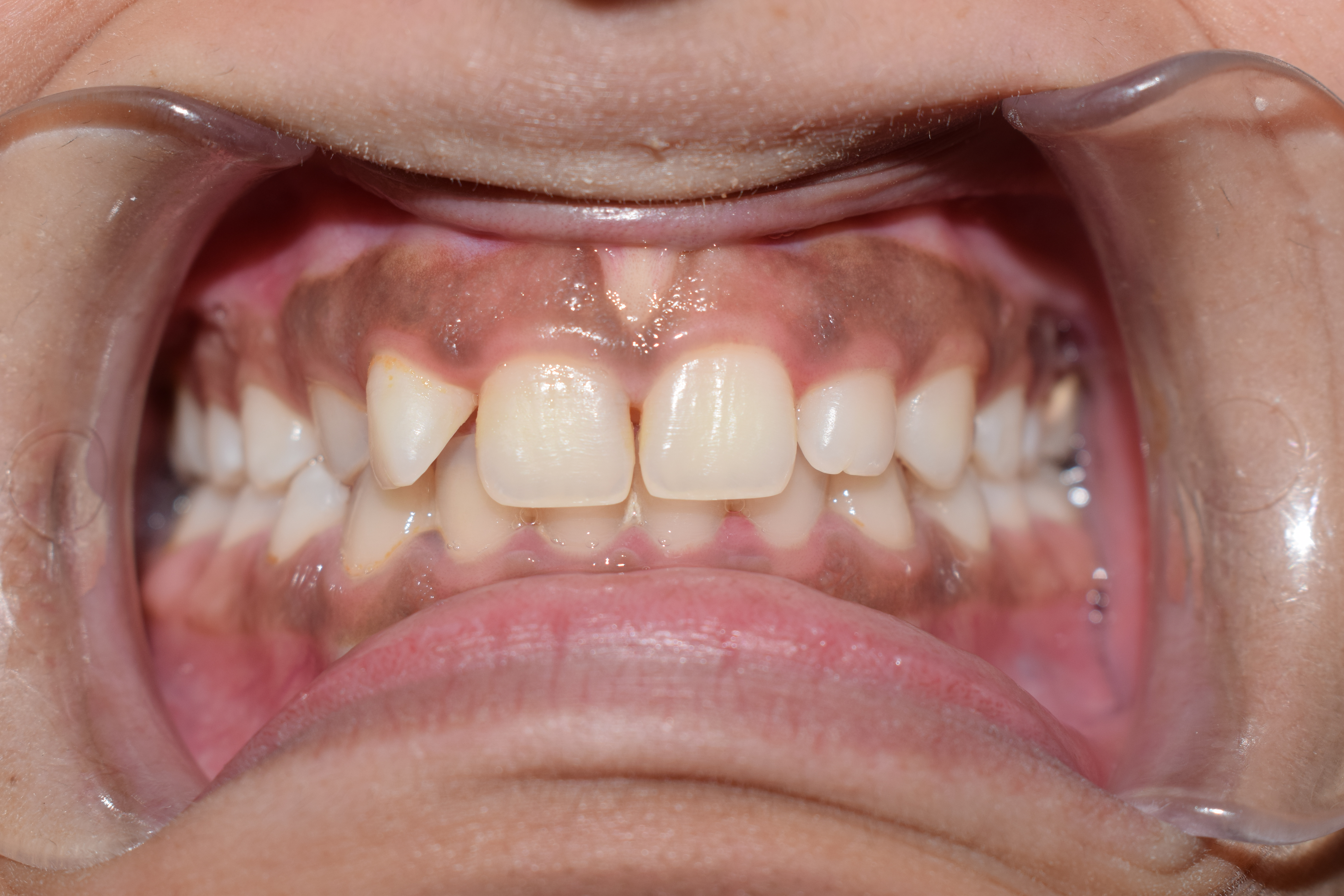|
Anorexia Mirabilis
Anorexia mirabilis, also known as holy anorexia or inedia prodigiosa or colloquially as fasting girls, is an eating disorder, similar to that of anorexia nervosa, that was common in, but not restricted to, the Middle Ages in Europe, largely affecting Catholic nuns and religious women. Self-starvation was common among religious women, as a way to imitate the suffering of Jesus in his torments during the Passion, as women were largely restricted to causing themselves voluntary pain by fasting, whereas holy men experienced suffering through physical punishment. Overview Etymology Anorexia mirabilis comes from the Latin meaning "miraculously inspired loss of appetite", whereas inedia prodigiosa means "great starvation". Description Anorexia mirabilis is primarily characterized by the refusal to eat, resulting in starvation, malnutrition, and oftentimes death. It differs from anorexia nervosa in that the disease is associated with religion as opposed to personal aesthetics, al ... [...More Info...] [...Related Items...] OR: [Wikipedia] [Google] [Baidu] |
Domenico Beccafumi 026
Domenico is an Italian given name for males and may refer to: People * Domenico Alfani, Italian painter * Domenico Allegri, Italian composer * Domenico Alvaro, Italian mobster * Domenico Ambrogi, Italian painter * Domenico Auria, Italian architect * Domenico del Barbiere, Florentine artist * Domenico di Bartolo, Italian painter * Domenico Bartolucci, Italian Roman Catholic cardinal * Domenico di Pace Beccafumi, Italian painter * Domenico Pignatelli di Belmonte, Italian Roman Catholic cardinal * Domenico Berardi, Italian footballer * Domenico Bernini, son of Gian Lorenzo Bernini * Domenico Bidognetti, Italian criminal * Domenico Bollani, Venetian diplomat and politician * Domenico Canale, Italian-American distributor * Domenico Caprioli, Italian painter * Domenico Caruso, Italian poet and writer * Domenico Cefalù, Italian-American mobster * Domenico Cimarosa, Italian composer * Domenico Cirillo, Italian physician and patriot * Domenico Colombo, father of Christopher Columbu ... [...More Info...] [...Related Items...] OR: [Wikipedia] [Google] [Baidu] |
Pelagia
Pelagia (), distinguished as Pelagia of Antioch, Pelagia the Penitent, and Pelagia the Harlot, was a Christian saint and hermit in the 4th or 5th century. Her feast day was celebrated on 8 October, originally in common with Saints Pelagia the Virgin and Pelagia of Tarsus. Pelagia died as a result of extreme asceticism, which had emaciated her to the point she could no longer be recognized. According to Orthodox tradition, she was buried in her cell on the Mount of Olives. Upon the discovery that the renowned monk had been a woman, the holy fathers tried to keep it a secret, but the gossip spread and her relics drew pilgrims from as far off as Jericho and the Jordan valley. Saint Pelagia is one of several classical Christian desert ascetics whose gender identity is often up for debate. This is due to physical descriptors used within the mythos often leaning towards masculine. Legend Pelagia's story is attributed to James or Jacob (), deacon of the church of Heliopolis (mode ... [...More Info...] [...Related Items...] OR: [Wikipedia] [Google] [Baidu] |
Bulimia Nervosa
Bulimia nervosa, also known simply as bulimia, is an eating disorder characterized by binge eating (eating large quantities of food in a short period of time, often feeling out of control) followed by compensatory behaviors, such as self-induced vomiting or fasting, to prevent weight gain. Other efforts to lose weight may include the use of diuretics, laxatives, stimulants, water fasting, or excessive exercise. Most people with bulimia are at normal weight and have higher risk for other mental disorders, such as depression, anxiety, borderline personality disorder, bipolar disorder, and problems with drugs to alcohol. There is also a higher risk of suicide and self-harm. Bulimia is more common among those who have a close relative with the condition. The percentage risk that is estimated to be due to genetics is between 30% and 80%. Other risk factors for the disease include psychological stress, cultural pressure to attain a certain body type, poor self-esteem, and obes ... [...More Info...] [...Related Items...] OR: [Wikipedia] [Google] [Baidu] |
Vomiting
Vomiting (also known as emesis, puking and throwing up) is the forceful expulsion of the contents of one's stomach through the mouth and sometimes the nose. Vomiting can be the result of ailments like food poisoning, gastroenteritis, pregnancy, motion sickness, or hangover; or it can be an after effect of diseases such as brain tumors, elevated intracranial pressure, or overexposure to ionizing radiation. The feeling that one is about to vomit is called nausea; it often precedes, but does not always lead to vomiting. Impairment due to alcohol or anesthesia can cause inhalation of vomit. In severe cases, where dehydration develops, intravenous fluid may be required. Antiemetics are sometimes necessary to suppress nausea and vomiting. Self-induced vomiting can be a component of an eating disorder such as bulimia nervosa, and is itself now classified as an eating disorder on its own, purging disorder. Complications Aspiration Vomiting is dangerous if gastric content e ... [...More Info...] [...Related Items...] OR: [Wikipedia] [Google] [Baidu] |
Gag Reflex
The pharyngeal reflex or gag reflex is a reflex muscular contraction of the back of the throat, evoked by touching the roof of the mouth, back of the tongue, area around the tonsils, uvula, and back of the throat. It, along with other aerodigestive reflexes such as reflexive pharyngeal swallowing, prevents objects in the oral cavity from entering the throat except as part of normal swallowing and helps prevent choking, and is a form of coughing. The pharyngeal reflex is different from the laryngeal spasm, which is a reflex muscular contraction of the vocal cords. Reflex arc In a reflex arc, a series of physiological steps occur very rapidly to produce a reflex. Generally, a sensory receptor receives an environmental stimulus, in this case from objects reaching nerves in the back of the throat, and sends a message via an afferent nerve to the central nervous system (CNS). The CNS receives this message and sends an appropriate response via an efferent nerve (also known as a m ... [...More Info...] [...Related Items...] OR: [Wikipedia] [Google] [Baidu] |
Throat
In vertebrate anatomy, the throat is the front part of the neck, internally positioned in front of the vertebrae. It contains the Human pharynx, pharynx and larynx. An important section of it is the epiglottis, separating the esophagus from the trachea (windpipe), preventing food and drinks being inhaled into the lungs. The throat contains various blood vessels, pharyngeal muscles, the adenoid, nasopharyngeal tonsil, the tonsils, the palatine uvula, the trachea, the esophagus, and the vocal cords. Mammal throats consist of two bones, the hyoid bone and the clavicle. The "throat" is sometimes thought to be synonymous for the Fauces (throat), fauces. It works with the mouth, ears and nose, as well as a number of other parts of the body. Its pharynx is connected to the mouth, allowing speech to occur, and food and liquid to pass down the throat. It is joined to the nose by the nasopharynx at the top of the throat, and to the ear by its Eustachian tube. The throat's trachea carries in ... [...More Info...] [...Related Items...] OR: [Wikipedia] [Google] [Baidu] |
Eucharist
The Eucharist ( ; from , ), also called Holy Communion, the Blessed Sacrament or the Lord's Supper, is a Christianity, Christian Rite (Christianity), rite, considered a sacrament in most churches and an Ordinance (Christianity), ordinance in others. Christians believe that the rite was instituted by Jesus at the Last Supper, the night before Crucifixion of Jesus, his crucifixion, giving his Disciple (Christianity), disciples bread and wine. Passages in the New Testament state that he commanded them to "do this in memory of me" while referring to the bread as "my body" and the cup of wine as "the blood of my covenant, which is poured out for many". According to the synoptic Gospels, this was at a Passover meal. The elements of the Eucharist, sacramental bread, either Leavening agent, leavened or Unleavened bread, unleavened, and sacramental wine (non-alcoholic grape juice in some Protestantism, Protestant traditions, such as Methodism), are consecrated on an altar or a communio ... [...More Info...] [...Related Items...] OR: [Wikipedia] [Google] [Baidu] |
Fasting
Fasting is the act of refraining from eating, and sometimes drinking. However, from a purely physiological context, "fasting" may refer to the metabolic status of a person who has not eaten overnight (before "breakfast"), or to the metabolic state achieved after complete digestion and absorption of a meal. Metabolic changes in the fasting state begin after absorption of a meal (typically 3–5 hours after eating). A '' diagnostic fast'' refers to prolonged fasting from 1–100 hours (depending on age), conducted under observation, to facilitate the investigation of a health complication (usually hypoglycemia). Many people may also fast as part of a medical procedure or a check-up, such as preceding a colonoscopy or surgery, or before certain medical tests. '' Intermittent fasting'' is a technique sometimes used for weight loss or other health benefits that incorporates regular fasting into a person's dietary schedule. Fasting may also be part of a religious ritual, often asso ... [...More Info...] [...Related Items...] OR: [Wikipedia] [Google] [Baidu] |
Catherine Of Siena
Caterina di Jacopo di Benincasa (25 March 1347 – 29 April 1380), known as Catherine of Siena, was an Italian mystic and pious laywoman who engaged in papal and Italian politics through extensive letter-writing and advocacy. Canonized in 1461, she is revered as a saint and as a Doctor of the Church due to her extensive theological authorship. She is also considered to have influenced Italian literature. Born and raised in Siena, Catherine wanted from an early age to devote herself to God, against the will of her parents. She joined the " mantellates", a group of pious women, primarily widows, informally devoted to Dominican spirituality; later these types of urban pious groups would be formalized as the Third Order of the Dominicans, but not until after Catherine's death. Her influence with Pope Gregory XI played a role in his 1376 decision to leave Avignon for Rome. The Pope then sent Catherine to negotiate peace with the Florentine Republic. After Gregory XI's death (March ... [...More Info...] [...Related Items...] OR: [Wikipedia] [Google] [Baidu] |
Infante
Infante (, ; f. ''infanta''), also anglicised as "infant" or translated as "prince", is the title and rank given in the Iberian kingdoms of Spain (including the predecessor kingdoms of Aragon, Castile, Navarre, and León) and Portugal to the sons and daughters (''infantas'') of the king, regardless of age, sometimes with the exception of the heir apparent or heir presumptive to the throne who usually bears a unique princely or ducal title.de Badts de Cugnac, Chantal. Coutant de Saisseval, Guy. ''Le Petit Gotha''. Nouvelle Imprimerie Laballery, Paris 2002, p. 303, 364–369, 398, 406, 740–742, 756–758 , . A woman married to a male ''infante'' was accorded the title of ''infanta'' if the marriage was dynastically approved (e.g., Princess Alicia of Bourbon-Parma), although since 1987 this is no longer automatically the case in Spain (e.g., Princess Anne d'Orléans). Husbands of born ''infantas'' did not obtain the title of ''infante'' through marriage (unlike most heredit ... [...More Info...] [...Related Items...] OR: [Wikipedia] [Google] [Baidu] |
Communion Wafer
Sacramental bread, also called Communion bread, Communion wafer, Sacred host, Eucharistic bread, the Lamb or simply the host (), is the bread used in the Christian ritual of the Eucharist. Along with sacramental wine, it is one of two elements of the Eucharist. The bread may be either leavened or unleavened, depending on tradition. Catholic theology generally teaches that at the Words of Institution the bread's substance is changed into the Body of Christ, a process known as transubstantiation. Conversly, Eastern Christian theology generally views the epiclesis as the point at which the change occurs. Christianity Etymology of ''host'' The word ''host'' is derived from the Latin , which means 'sacrificial victim'. The term can be used to describe the bread both before and after consecration, although it is more correct to use it after consecration. Eastern traditions With the exception of Churches of the Armenian Rite, the Maronite Church, and the Syro-Malabar Church, ... [...More Info...] [...Related Items...] OR: [Wikipedia] [Google] [Baidu] |
Gums
The gums or gingiva (: gingivae) consist of the mucosal tissue that lies over the mandible and maxilla inside the mouth. Gum health and disease can have an effect on general health. Structure The gums are part of the soft tissue lining of the mouth. They surround the teeth and provide a seal around them. Unlike the soft tissue linings of the lips and cheeks, most of the gums are tightly bound to the underlying bone which helps resist the friction of food passing over them. Thus when healthy, it presents an effective barrier to the barrage of periodontal insults to deeper tissue. Healthy gums are usually coral pink in light skinned people, and may be naturally darker with melanin pigmentation. Changes in color, particularly increased redness, together with swelling and an increased tendency to bleed, suggest an inflammation that is possibly due to the accumulation of bacterial plaque. Overall, the clinical appearance of the tissue reflects the underlying histology, both in hea ... [...More Info...] [...Related Items...] OR: [Wikipedia] [Google] [Baidu] |







